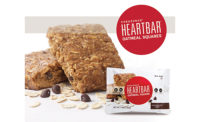Additions to Heart Health

The highest-profile study on the Portfolio diet was published in 2003 by Jenkins, et al., in the Journal of the American Medical Association. In this randomized, controlled clinical study, 46 healthy hyperlipidemic adults followed a diet that was low in saturated fat and included plant sterols and viscous fibers, as recommended by the Adult Treatment Panel II of the National Cholesterol Education Program; the diet also was high in soy and nuts, as supported by the American Heart Association. The study was divided about evenly between males and females, and the participants were split into three groups. The control group ate a diet very low in saturated fat, based on milled whole-wheat cereals and low-fat dairy foods; another segment ate the same diet plus Lovastatin, (20mg/d); and the last group, the Portfolio diet group, ate a diet high in plant sterols (1.0g/1,000Kcal), soy protein (21g/1,000Kcal), viscous fibers (9.8g/1,000 Kcal), and almonds (14g/1,000Kcal).
The decreases in low-density lipoprotein (LDL) were as follows: the control group experienced an 8% decrease; the Lovastatin/low-fat diet group had a 30.9% decrease; and the Portfolio diet group had a 28.6% decrease. The reductions in C-reactive protein were 10.0% for the control group, 33.3% for the Lovastatin group, and 28.2% for the Portfolio dieters. From a statistical standpoint, there were no differences between the Lovastatin and the dietary portfolio group changes, meaning the Portfolio diet was found to be as effective as the pharmaceutical regimen for controlling cholesterol.
Several ensuing studies have also reported good results. Jenkins, et al. (2005) found that the Portfolio diet was equally effective as a low-fat diet combined with Lovastatin. In 34 high-cholesterol participants, the Portfolio diet and Lovastatin/low-fat diet were again tested for their effects on inflammatory biomarkers (C-reactive protein). All participants completed a month-long diet consisting of a low-fat control diet, the same diet with Lovastatin, or the Portfolio diet. This time, although the Portfolio diet and the Lovastatin/low-fat diet were found to reduce C-reactive protein levels compared to the control diet, only the Portfolio diet caused significant changes.
Whether a person adopts the entire Portfolio Eating Plan, adds known cholesterol-lowering ingredients to his diet or undergoes lifestyle changes, there is evidence that preventive medical strategies have led to a decline in cholesterol levels and the incidence of heart attacks. Based on a large, federally funded study, it has been proven the growing use of cholesterol-lowering drugs (called statins) and modest changes in diet contribute to a gradual reduction in unhealthy cholesterol levels in elderly adults. Additionally, annual hospital admissions for heart attacks have gone down 6% since 2000, and admissions for other heart health-related conditions are either leveling off or declining, as reported by Dow Jones & Company in 2005.
The Return of the Vegetarian Diet?
Many diets start as theories and quickly grow into fads. One adage says dieters will melt fat away by eating only grapefruit. The truth is that most fad diets work by cutting out an entire food group, causing weight loss because fewer calories are consumed. The Portfolio diet, however, is a diet that began as a result of scientific study and is growing in popularity as the research builds. The main attraction is the potential to reduce LDL cholesterol by one third in only one month, without taking drugs.Another surprising element of the Portfolio diet is that it is a vegetarian diet. The vegetarian diet which was derogated as being carbohydrate-loaded and therefore fattening during the low-carb craze may be returning with newfound respectability as the Portfolio diet. Gratefully, there is nothing exotic or difficult about putting together menu plans under the Portfolio diet, a criticism often made of the vegetarian diet. All the ingredients are available from supermarkets or health food stores. Additionally, every meal contains soy in some form, such as soy yogurt or soymilk.
Maybe the French Have it All Figured Out
For those not fond of vegetarian foods and okra, perhaps another heart healthy diet that is gaining popularity will appeal to them. In its various forms, it may be known as the “French Women Don't Get Fat†or the “Wine, Cheese and Chocolate†diet. Regardless of the title, this diet plan is based on typical French food and research that has emerged on the cardiovascular benefits of consuming red wine and chocolate.Studies have shown that certain foods high in flavonoids--compounds that have a high antioxidant capacity--also help lower the risk of cardiovascular disease and its many biomarkers. An eight-year study of French women found that their high consumption of flavonoid-rich foods may prevent cardiovascular disease.
There are other hot heart health ingredients, including:
* Soluble fiber. Sources of soluble fibers recommended by the Portfolio diet include oats, barley, legumes, eggplant, okra and Metamucil. Soluble fiber consumption helps lower LDL cholesterol and improves the ratio of LDL to HDL cholesterol.
* Omega-3s. A diet high in omega-3 fatty acids, especially frequent consumption of cold-water fish, is associated with a decreased risk of heart attack. However, due to concerns about mercury toxicity from high fish consumption, pregnant women should follow the FDA's guidelines for seafood consumption during pregnancy.
* Nattokinase. According to Ralph E. Holsworth, MD, an enzyme called nattokinase is particularly beneficial for cardiovascular health. Nattokinase comes from the Japanese traditional soy food called natto. Holsworth believes nattokinase promotes cardiovascular health because of its pro-fibrinolytic activity, as is confirmed in several scientific studies. Fibrin forms in the bloodstream following trauma or injury to help clot the blood but may cause problems for people with poor cardiovascular health. Nattokinase breaks down fibrin, leading to more normal blood circulation. It is not a blood thinner, however, as it works specifically on the clotting mechanism.
* Vitamin and mineral systems. There are many vitamin and mineral supplements and fortifications that can help promote heart health (see chart “Key Heart-health Vitamins and Mineralsâ€). Vitamin and mineral systems for formulating heart-healthy, functional foods may include various combinations of key vitamins and minerals known to be co-factors or those that have been shown to enhance cardiovascular function.
Food for Fodder
As noted by Margo A. Denke of the University of Texas Health Science Center, in the American Journal of Clinical Nutrition, the Portfolio diet research will stimulate a lot of thought about the drug vs. diet debate. Are the results of these studies on the Portfolio diet usable and achievable for the typical American, and will there be branded Portfolio Eating Plan products in the grocery stores? In fact, RD Foods has just hit the market with cholesterol-lowering chocolate chip cookies, called Right Direction Cookies, which provide about 8g of soluble fiber and 2.6g of plant sterols for every two cookies eaten.
Denke adds, “For many, it is not the choice between diet and drug therapy per se that is important--it is the choice between which set of therapy-associated risks and inconveniences is more acceptable to achieve control of disease…A diet is designed to sustain life; dietary intake is not optional, but good dietary choices can enhance the control of disease.â€
The Portfolio Eating Plan: The Main Components
Soy -- One of the striking aspects of the Portfolio Diet is that it is a vegan diet, a vegetarian diet that also prohibits milk and egg products. Soymilk is a key ingredient that acts as a substitute for milk. One glass of soymilk provides approximately 8g of soy protein and is rich in isoflavones.
High-fiber grains -- Also called cereal fiber, high-fiber grains are a particularly beneficial source of fiber that has been linked to lowering the risk of heart disease. By the end of 2005, barley products were allowed to carry the health claim that they reduce the risk of coronary heart disease. Other beneficial high-fiber grains include brown rice, couscous and bulgur.
Fruits and vegetables -- Eating a diet high in fruits and vegetables may be one of the soundest pieces of advice our mothers ever gave us. Evidence exists that it can help prevent heart disease and stroke, control blood pressure and cholesterol, as well as prevent some types of cancer, diverticulitis, cataracts and macular degeneration. According to the largest and longest study to date, eating a diet high in fruits and vegetables (compared to the lowest intake groups) can reduce the chances of having a heart attack or stroke by 30%.
Psyllium -- As well as being a high-fiber supplement, psyllium is one of the best-known bulk-forming laxatives in the world. A recent study confirmed the dual effects of psyllium in lowering LDL cholesterol and improving glycemic control in diabetic (type II) patients.
Almonds -- Many studies have found that almonds have beneficial effects on cardiovascular health. Recently, almonds in the diet were found to simultaneously improve plasma alpha-tocopherol concentrations and reduce plasma lipids.
Looking for a reprint of this article?
From high-res PDFs to custom plaques, order your copy today!





